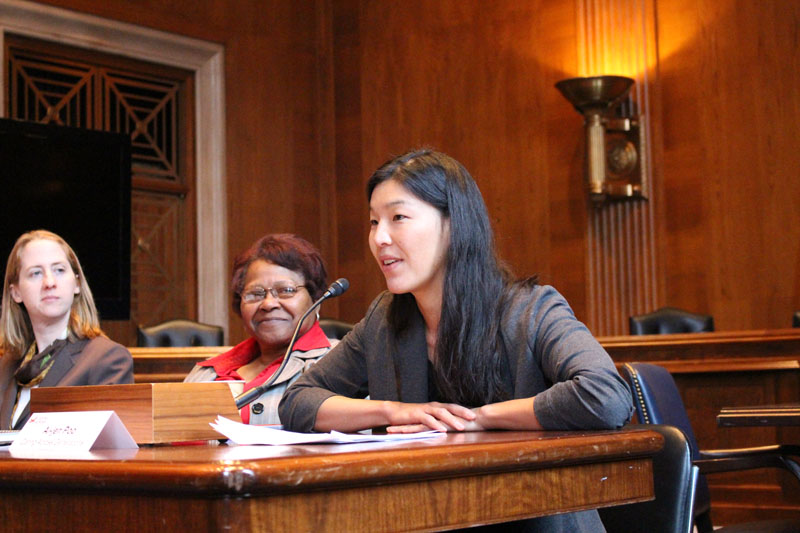We are proud to announce the launch of the CREATIVE CARE COUNCIL! LEARN MORE
We are proud to announce the launch of the CREATIVE CARE COUNCIL! LEARN MORE

By Caring Across Co-Director Ai-jen Poo
We’re in a moment of tremendous change in the country. The demographics are changing, the economy is changing, and families are changing. Four million people turn 65 per year in our nation. And because of advances in health care and technology, people are living longer than ever. By 2020, one out of every six Americans will be over the age of 65. This shift is changing a lot about the way we live in America.
Multi-generational families are living together again. Millennials are closer to their grandparents than any other generation in history. People are staying in the workforce longer, holding second, sometimes third careers. Home care work is the fastest growing occupation in the nation, not only in healthcare, but across all occupations.[i] By 2018, demand for home care workers will increase by more than 90%.[ii] Much of the change that’s taking place is complex – both challenging and full of opportunity, the opportunity for a good life in 21st century America; the potential to strengthen our families, communities, and the economy.
There are a lot of things we don’t know and can’t predict about the future. But there’s a lot that we do know. We know that:
We know a lot, and yet there’s still much that we don’t know. This is why Caring Across Generations is proposing the creation of a state innovation fund – to support innovations in home care that bring all the stakeholders to the table to create more choices for older adults, people with disabilities and their families, and more opportunity, better jobs for the workforce. We believe the matter is urgent and important, and that the most important thing we can be doing at this moment is supporting innovation where it’s already happening – in states. We must pilot, experiment, document, listen to people in communities around the country and learn.
There’s already tremendous creativity happening at the state level, because of the demographic changes we’re experiencing as a nation. The “silver tsunami” hit some states earlier than others and they have had no choice but to take this on. Many states are seeing the opportunity to develop new and exciting models of multi-stakeholder collaboration, to expand home care, boost the economy and create jobs, and create new efficiencies in the health care delivery system.
Some examples include:
We believe that through encouraging and learning from the ongoing initiative of states, we will start to see the models that can be scaled, save our system money, create good jobs for the care workforce, and more choices for consumers.
We will then begin to see the contours of a federal solution that could work for the future. Now is the time to make the investment in the future of care, where it’s being innovated and developed in real time.
Join us in calling on Congress to take action and support our states.
Citations:
[i] Bureau of Labor Statistics, U.S. Department of Labor, Occupational Outlook Handbook, 2010‐11 Edition, Home Health Aides and Personal and Home Care Aides, on the Internet at http://www.bls.gov/oco/ocos326.htm
[ii] PHI (February 2010) Occupational Projections for Direct‐Care Workers, 2008‐2018, FACTS 1. Available at: http://directcareclearinghouse.org/download/PHI%20FactSheet1Update_singles%20(2).pdf